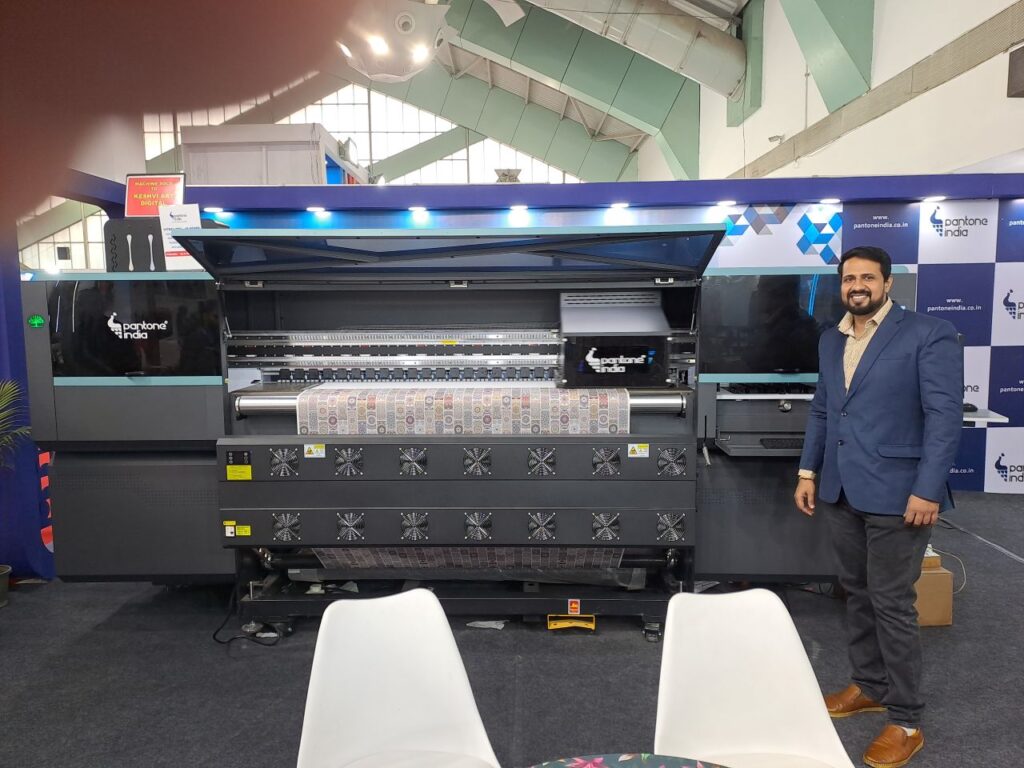By Arun Rao
Going Against the Grain in the Surat Textile Industry
At a time when the Surat textile industry was flooded with cheap sublimation printers, Surat-based Pantone India took a different approach by introducing high-quality printers with remarkable stability. Pantone India’s sublimation printers stand out because they do not vibrate even at high speeds, offering superior performance.

“We started Pantone India in 2020 with just four people, including my partner, Mr. Mahendra Rane, and two service engineers. All of us had prior experience working in a company that sold sublimation textile printers. Before launching our business, we visited China and met several digital printer manufacturers,” said Mr. Hiren Deshmukh, Director at Pantone India, during an interview with The Textile Magazine.
The Need for Quality Over Price
The Chinese manufacturers offer a wide range of printers, including low, medium, and high-quality options. While the Surat market was inundated with cheaper sublimation printers, Pantone India decided to break away from the trend. Instead of competing on price, they focused on offering the best quality printers, launching them under their own brand name rather than a Chinese brand. Additionally, Pantone India imports and sells printing inks, sublimation printing papers, and heat transfer machines.
Wide Range of Printers and Equipment
Pantone India offers various sublimation printer models, including 8-head, 12-head, 16-head, and 24-head options. All these machines are equipped with Epson printheads. The company also supplies heat transfer machines in sizes with diameters of 600, 800, 1,000, and 1,200 mm, along with heat transfer blankets in roll form.
Regarding inks, Pantone India provides three different quality levels: normal, standard, and premium. According to Mr. Deshmukh, the premium ink category is highly favored by printers in Mumbai, Daman, and Vapi, who print fabrics for well-known brands such as Zara and Van Heusen.
Optimizing Production Capacity with Printhead Variants
In a printer, production capacity increases with the number of printheads. For example, an 8-head machine offers a daily production capacity of 2,000 sq. meters, while a 16-head machine can handle up to 4,000 sq. meters per day. The Surat textile industry, which is centered on mass production, has seen Pantone India grow from offering a 4-head printer at the start to providing 24-head printers capable of producing up to 7,500 sq. meters per day.
Emphasis on After-Sales Service
With a background in servicing machines, Pantone India places a strong emphasis on after-sales service, knowing how critical it is to reduce downtime and keep customers satisfied. This focus on timely and efficient service has helped them build a reputation through word of mouth, securing repeat business and new orders.
Superior Quality for Better Resolution
To achieve high-resolution prints, it is essential to have a good firing frequency of inks. While several Chinese manufacturers provide boards for sublimation printers, Pantone India opts for Hoson boards. Although more expensive, these boards offer superior firing frequency, which results in better print resolution and overall quality.
Looking to the Future: 3D Fabric Printing Technology
In the near future, Pantone India plans to expand into 3D fabric printing technology. This innovative technique will add value to fabric printing by enabling designs such as raised flower prints above the fabric surface, taking customization one step further from current trends like printing foils around floral designs.